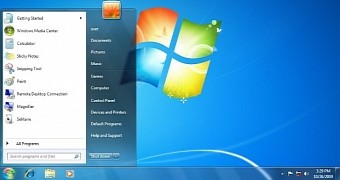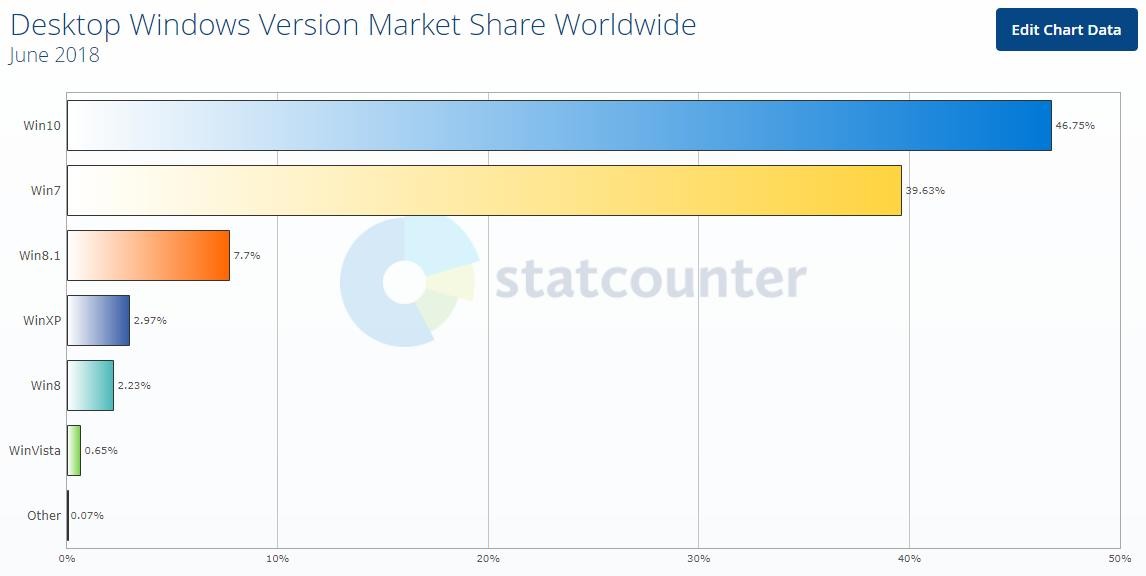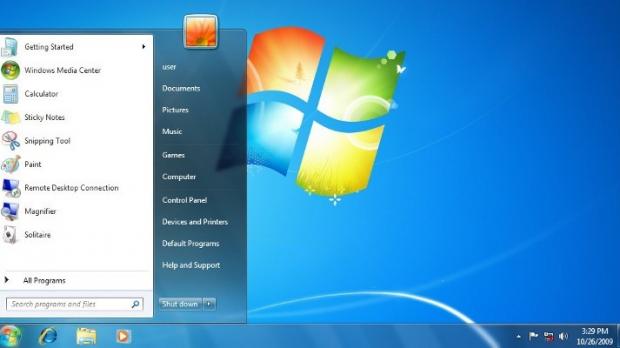Microsoft is pushing hard for Windows 10 to become the preferred choice for desktop users worldwide, and at some points, the company has even turned to tactics that many people considered to be unacceptable for a company the size of the software giant, like forced upgrades.
Lawsuits accused Microsoft of unfair practices to move computers to Windows 10, and even though the company has never acknowledged this behavior loud and clear, it did say that it’d do better in the future.
Unfortunately for Microsoft, Windows 10 is more or less stagnating, and when it grows, it does it at a rather slow pace. In June, for instance, Windows 10 has posted a market share increase of just 0.18 percent, all during the first full month of the April 2018 Update being broadly available.
Windows 7, on the other hand, jumped from 41.79 percent to 43.03 percent, according to NetMarketShare data, despite Microsoft praising Windows 10 on every occasion and despite focusing entirely on this OS version when it comes to features and improvements.
In the case of StatCounter data, it’s a different market research firm, but the same story. Even though StatCounter puts Windows 10 on the leading spot of the desktop operating system world, it also shows a decline last month, all while Windows 7 gained share. Specifically, Windows 10 dropped from 47.21% to 46.75%, when Windows 7 improved from 39.44% to 39.63%.
Windows 7, the king
By the looks of things, as long as Windows 7 is still around, Windows 10’s potential isn’t fully unleashed, as many users refuse to upgrade for several reasons.
This is all supposed to end in January 2020 when Windows 7 will reach end of support, so no other updates and security patches would be released beyond this deadline. But despite this, there’s a good chance Windows 7 will stick around for many more years.
So how has Windows 7 become such a tough nut to track? In addition to the smooth performance of the operating system, there’s something else that many users take into account when pondering the upgrade to Windows 10 and eventually refusing to do it.
A substantial part of the Windows userbase prefers the operating system without a modern UI, instead choosing to stick with a more classic platform. Windows 8 was the first to push for this transition, and the removal of some key features, like the Start menu, triggered a prompt reaction from the user community. Windows 8 proved to be a flop that was more or less fixed with Windows 8.1, which brought back the Start button, but without a Start menu.
Windows 10 is far from being a flop, but this aversion towards modern operating systems keep people on Windows 7 and is unlikely to change before January 2020. Many users like things simple and as long as Windows 7 does its job as it is supposed to, there’s no reason to upgrade.
The more concerning part should be the security of Windows 7. Windows 10 is undoubtedly a more secure operating system, and while the 2009 sibling is still getting improvements and patches in this regard, not the same thing can be said after reaching the 2020 deadline.
By that point, Windows 7 will be just as vulnerable as Windows XP is right now, and users running it will have no other option than to upgrade to either Windows 8.1 or Windows 10. Which means that embracing the modern side of the operating system will be inevitable.
Microsoft has made a terrific job in making Windows 10 more user-friendly and addressing feedback in a way that more or less brings back features users loved the most in the previous OS versions, but convincing Windows 7 users to upgrade won’t just happen overnight.
Everyone’s problem, including users’ and Microsoft’s, is that the clock is ticking, and in exactly 560 days, Windows 7 is set to become an obsolete operating system.

 14 DAY TRIAL //
14 DAY TRIAL // 

